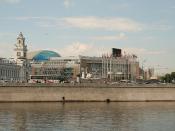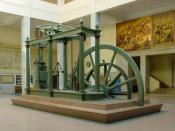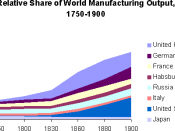If one looks at Europe in the mid 1900s and the entire world today, one can see a mirror image of the old big 5 countries. In the 19th century it was Great Britain, France, Austria, Russia, and Prussia, but today it is China, India, United States, the European Union, and Russia. Today's United States could be compared to 19th century Great Britain, in terms of economic dominance and world influence. China could be considered the modern day France/Russia because of its gigantic population and sheer land mass. The same could be said of India. The European Union, though not a country, could be considered something like the Confederation of the Rhine before their unification by Prussia. Finally, Russia of today is still very much like the Russia of the 19th century, huge landmass, but slightly behind in terms of technology.
Following the Congress of Vienna, Europe entered into the Industrial Revolution. Beginning around 1980, the world has entered into a kind of technological revolution. Just as the Industrial Revolution was sparked by James Watt's invention of the improved steam engine, this new technological revolution was sparked by the invention of the microchip or the computer. Along with the development of digital technology
There are many parallels to how the steam engine and the computer affected the world. Such as, the steam engine enabled people to travel faster (trains), essentially shrinking the world. In comparison, the computer shrunk the world via Internet communications and online business. Also in the same way the steam engine improved the efficiency of factories and created new machines, the computer has done all these things, but taken them to the next level with digital technology. Just as the steam engine improved people's lives, the computer and digital technology have changed and enhanced...



Well...
When you said technilogical revolution I was thinking the transformation today into a world of computers but either way your essay needs to be longer. I doubt Admin will accept it. perhaps you can do some more research, campare/contrasting/ and general revising and submit it again. It is a good start.
2 out of 2 people found this comment useful.